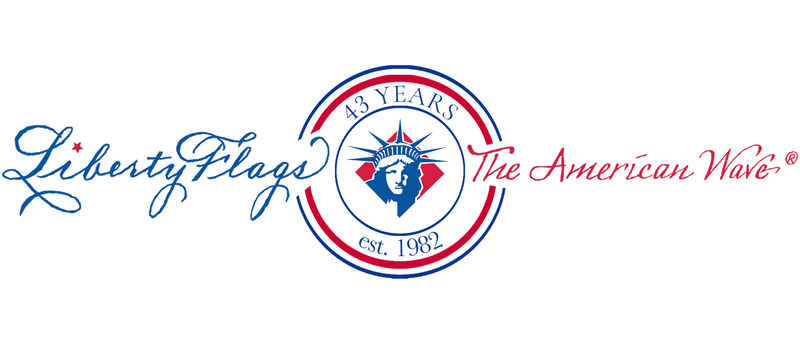The Finial Ball at the Top of Your Flagpole
If you've been following along with our posts, a focus has been on the preventive measures we can take to prolong the life of our flags and flagpoles. In this post our attention is on the finial ball that tops most flagpoles.
The finial ball is available in 5 diameters - the size typically matches the bottom diameter of the flagpole shaft and serves a couple of purposes. Chief among them is it's service as a decorative finish to the top of the flagpole. However, it also serves as a protective device for both the flag and the flagpole. Here's how. . .
The Flagpole Ball Redirects Precipitation
On external halyard flagpoles, the finial ball is positioned above the truck, which houses the pulley that allows the rope to easily raise and lower the flag. The positioning of the finial ball means that it will shed water away from the truck. While the truck is weather resistant, it is a good idea to limit the exposure of working parts to water.
Snag-Free Flag
Again, the position of the finial ball atop the flagpole is the core of its usefulness. In this instance, the finial ball protects the flag by preventing it from being snagged on any other parts at the top of the flagpole. The smooth, round surface means that wind-whipped flags will slide right over the top of the pole instead of being caught on working parts or the flagpole itself. A broken finial ball would reverse the situation, and endanger the flag.
How Does a Finial Ball Become Damaged?
There are many ways that a finial ball can become damaged, from hail or debris during storms to unnoticed damage from being dropped or stepped on during the hoisting of the flagpole. However, it is also very common for finial balls to become damaged due to improper installation. For instance, if the finial ball is installed without a thread-lock agent and/or a jam-nut, then the normal vibrations that constantly occur at the top of the flagpole could cause the finial ball to gradually unscrew itself, leading to further damage.
Identifying a Damaged Finial Ball
There are a variety of visual clues that could mean the finial ball is damaged. Sometimes the finial ball is sitting at an angle at the top of the pole. Poles with eagle (or other) ornaments might have visible damage such as a cracked wing. The ball may also be broken at the horizontal seam that separates the top and bottom hemispheres. Keep in mind, however, that some damage may not be readily visible from the ground.
Photo Call!
This spring, stay up to date on your flagpole's maintenance. Doing so can save you significant amounts of money in the long run. Also, send us your pictures of flags, flagpoles, ropes, or other accessories! We would be honored to feature your photography in our blog or on Facebook.
Do you have suggestions for information you'd like to see here? If so, please send them our way!
Please send all of your suggestions or questions to service@LibertyFlags.com. We want to hear from you!
Have a great day, from your friends at LIBERTY FLAGS, The American Wave®.


